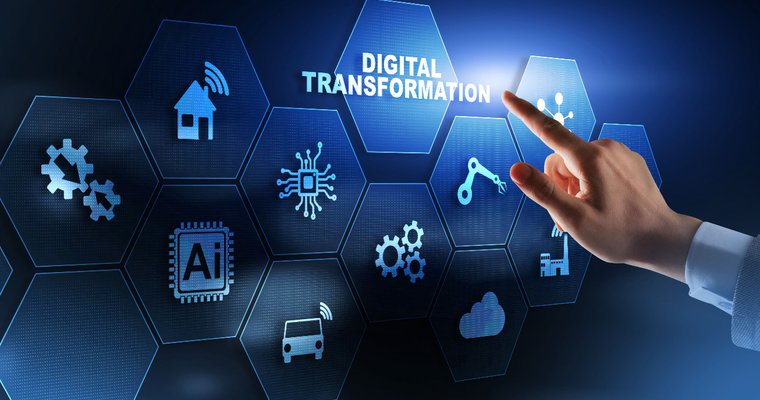8 Digital Transformation Trends and Strategies for 2023
Digital transformation has become a strategic imperative for organizations across industries as they strive to stay competitive and thrive in the ever-evolving digital landscape. The year 2023 is expected to bring new opportunities and challenges for businesses embarking on their digital transformation journey.
In this context, it is crucial for organizations to be aware of the latest trends and strategies that can shape their digital transformation initiatives in 2023. From leveraging emerging technologies such as artificial intelligence (AI) and machine learning (ML), to prioritizing customer-centricity, adopting agile methodologies, and strengthening cybersecurity, organizations need to align their strategies to effectively navigate the digital landscape.
Additionally, reskilling and upskilling the workforce, embracing cloud computing, and fostering ecosystem partnerships will also play a key role in driving successful digital transformation efforts in 2023.
In this article, we will delve into 8 digital transformation trends and strategies that organizations should consider in 2023 to thrive in the digital era.
8 Digital Transformation Trends and Strategies for 2023
1. Artificial Intelligence (AI) and Machine Learning (ML):
AI and ML technologies continue to rapidly advance, and organizations are leveraging them to automate processes, gain insights from data, and enhance customer experiences. Companies are adopting AI and ML in areas such as predictive analytics, chatbots, and personalized recommendations to drive digital transformation.
Strategy:
Invest in AI and ML technologies to automate processes, optimize operations, and enhance customer experiences. Develop an AI and ML roadmap to identify use cases with high business impact and implement pilots to test and scale the solutions.
2. Internet of Things (IoT):
IoT is expanding rapidly, with connected devices becoming more prevalent in industries such as manufacturing, logistics, healthcare, and smart cities. Organizations are leveraging IoT to collect data from sensors, devices, and machines to optimize operations, improve efficiency, and enable new business models.
Strategy:
Develop an IoT strategy to harness the power of connected devices and sensors. Identify opportunities to collect data from IoT devices, analyze the data to gain insights, and take actions to optimize operations and create new value propositions for customers.
3. Cybersecurity:
As digital transformation accelerates, cybersecurity becomes a critical concern. Organizations need to safeguard their digital assets, customer data, and intellectual property from cyber threats. Cybersecurity strategies should focus on protecting data, detecting threats, and responding to incidents in real-time.
Strategy:
Invest in robust cybersecurity technologies, processes, and training to ensure the confidentiality, integrity, and availability of digital assets. Implement proactive monitoring and threat intelligence systems, conduct regular security audits, and establish incident response plans to effectively manage cybersecurity risks.
4. Cloud Computing:
Cloud computing continues to be a fundamental enabler of digital transformation. Organizations are leveraging cloud services to build scalable, flexible, and cost-effective IT infrastructures, enabling rapid deployment of new applications and services, and enabling remote work.
Strategy:
Develop a cloud strategy to migrate workloads to the cloud, optimize cloud costs, and take advantage of cloud-native technologies. Adopt a multi-cloud or hybrid cloud approach to diversify risk, ensure data redundancy, and maximize agility.
5. Data Analytics and Insights:
Data is the foundation of digital transformation, and organizations are increasingly leveraging data analytics to gain insights, make data-driven decisions, and create personalized customer experiences. Advanced analytics techniques such as big data analytics, data visualization, and predictive analytics are being used to unlock business value from data.
Strategy:
Invest in data analytics tools, technologies, and talent to harness the power of data. Develop data governance policies, data management practices, and data quality frameworks to ensure data integrity and accuracy. Implement data analytics projects to gain insights from data and drive business outcomes.
6. Customer Experience (CX):
Customer experience remains a top priority for organizations as they strive to deliver seamless, personalized, and convenient experiences to their customers. Digital technologies such as chatbots, virtual assistants, and omnichannel experiences are being used to enhance CX and build customer loyalty.
Strategy:
Focus on understanding customer needs, preferences, and behaviors through data and analytics. Use digital technologies to create personalized experiences across multiple touchpoints, integrate online and offline channels, and provide excellent customer service.
7. Agile and DevOps:
Agile and DevOps methodologies continue to gain momentum in organizations that are embracing digital transformation. Agile methodologies enable organizations to quickly respond to changing market dynamics, while DevOps practices enable seamless collaboration between development and operations teams to accelerate software development and deployment.
Strategy:
Adopt Agile and DevOps practices to enable faster time-to-market for new products and services. Implement cross-functional teams, embrace continuous integration and continuous delivery (CI/CD) pipelines, and automate testing and deployment processes to enable rapid software development and deployment.
8. Talent Management:
Talent management is a critical aspect of digital transformation as organizations need to ensure they have the right skills and capabilities to drive their digital initiatives successfully. Talent management encompasses a strategic approach to acquiring, retaining, developing, and deploying talent to meet the evolving needs of the organization in the digital era.
Strategy:
Develop a comprehensive talent management strategy that focuses on acquiring, retaining, and upskilling the right talent for digital transformation. Identify skill gaps and invest in training and development programs to enhance digital skills among employees.
Foster a culture of innovation and continuous learning to encourage employees to embrace digital transformation. Also, consider partnerships with external organizations or hiring specialized talent to complement in-house capabilities. Establish mechanisms for talent retention, recognition, and career advancement to retain top talent in a competitive digital talent market.
Conclusion:
Organizations need to embrace these digital transformation trends and strategies in 2023 to stay competitive and thrive in the rapidly evolving digital landscape. By investing in technologies such as AI, IoT, cloud computing, and data analytics, focusing on customer experience, adopting agile and DevOps methodologies, and nurturing a skilled workforce, organizations can unlock new opportunities, optimize operations, and create value for their customers in the digital era.



